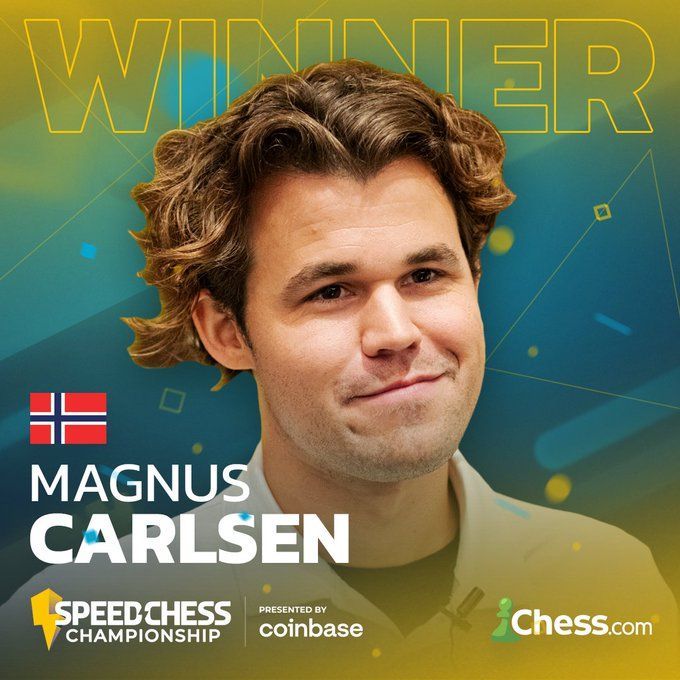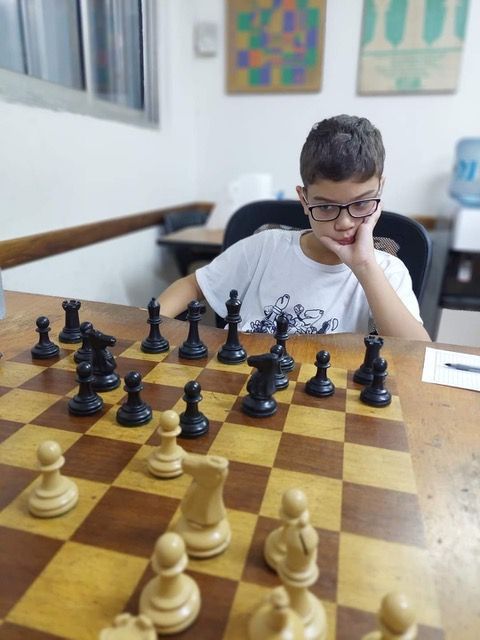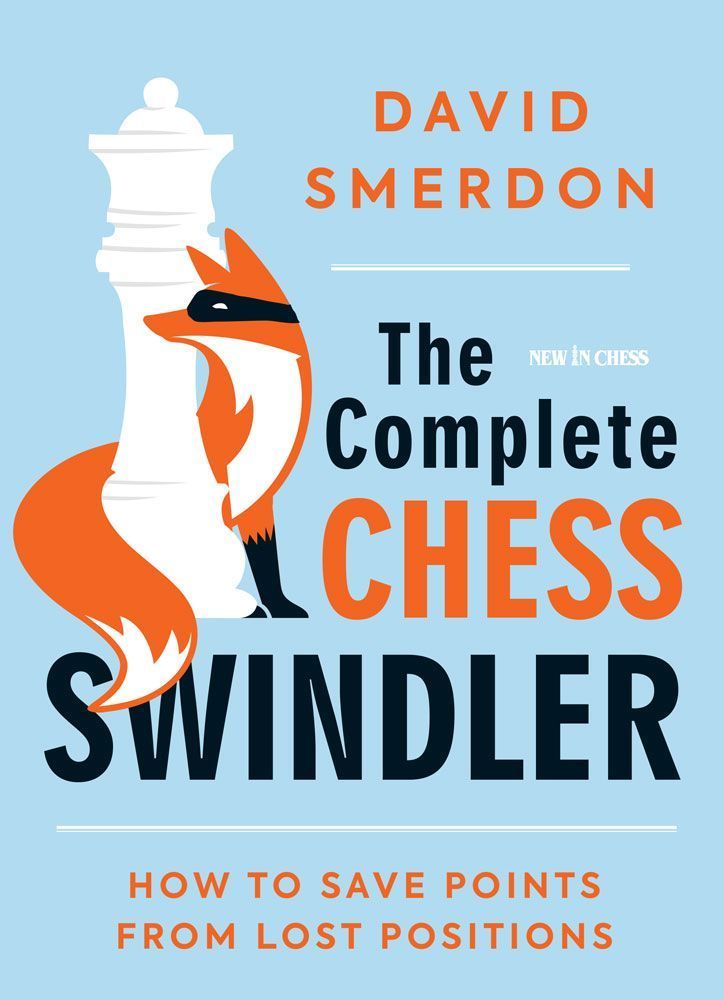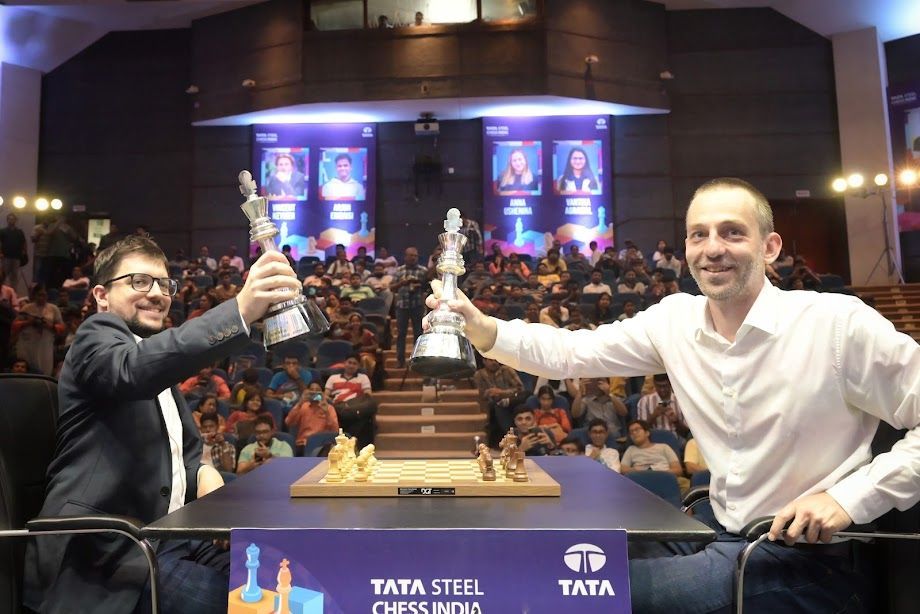Last Man Standing
The $1.6m FIDE World Cup has now reached the quarterfinal stage in Tbilisi, Georgia, but along the way has seen plenty of drama with many of the top favorites falling by the wayside and the ignominy of having to head home early, most notably Magnus Carlsen – who has touted this format to decide his world championship title each year – who learned the hard way why this format is regarded to be the biggest crapshoot in chess, after he unexpectedly lost to China’s Bu Xianngzhi.
Knock-out World Cups, at one time, used to decide the FIDE world title, have proven extraordinarily difficult for favorites, with only Viswanathan Anand able to win multiple knockout events – but he could soon be joined by another. Two previous winners, Levon Aronian of Armenia and Russia’s Peter Svidler, are still left in the competition – and the Armenian took a big step towards his quest of being the last man left standing in the 128-player field after trouncing Vassily Ivanchuk today.
After back-to-back victories over Vladimir Kramnik and Anish Giri, Ivanchuk’s good fortune finally ran out, as the veteran Ukrainian – perhaps a little exhausted following his previous feats – found himself being outclassed and outplayed over the board by Aronian in the opening game of their two-game mini-match.
In the other quarterfinal match-ups, Svidler drew with Maxime Vachier-Lagrave and Richard Rapport drew with Ding Liren. Wesley So is the the last American left standing, and he also drew his first game as Black against Vladimir Fedoseev, who knocked out Hikaru Nakamura earlier in the tournament.
You can follow the latest progress of the matches over the weekend with live coverage available at the official site (and, if needed, tiebreaks on Sunday). And the brackets showing the full results (and final tiebreak scores) is available by clicking here.
GM Levon Aronian – GM Vassily Ivanchuk
FIDE World Cup, (5.1)
English/Reti Openin
g1.c4 e6 2.g3 d5 3.Bg2 dxc4 4.Qa4+ c6 5.Qxc4 b5 6.Qc2 Bb7 7.Nf It may not look like much, but these sort of positions can be deadly for Black, especially if White can safely establish the pawn centre with d4 and e4 – and Black’s job here is to prevent this by countering with …c5. 7…Nd7 8.Nc3 Rc8 9.0-0 a6 10.d4 c5 11.d5! Ivanchuk had probably thought this was not possible – but Aronian has a far deeper understanding of all of these sort of English/Catalan/Reti types of positions. And in these set-ups, if White can get d5 in safely, Black is in deep trouble. 11…exd5 12.Nh4 The pin on the Bb7 is problematic for Ivanchuk to deal with, as it means he can’t push with …d4 nor adequately support his d5 pawn. 12…Ndf6 Ivanchuk faces an early dilemma here: The natural move that he’d really like to play is 12…Ngf6 – but after 13.Rd1 Nb6 14.a4! Nxa4 (Things get even more complicated for Black after 14…b4? 15.a5! bxc3 16.axb6 as the position rapidly opens up with White fully developed, lots of opening lines and ready to strike, while Black’s king is still stuck in the centre of the board.) 15.Nxa4 bxa4 16.Qxa4+ Bc6 (Not 16…Qd7? 17.Qxd7+! Nxd7 (If 17…Kxd7 18.Bg5! Rc6 19.Bxf6 Rxf6 20.Bxd5 Bxd5 21.Rxd5+ Ke8 22.Rad1 Be7 23.Rd7 and White is winning, as Black is in too much of a muddle to develop his rook on h8.) 18.Bxd5 Bxd5 19.Rxd5 Rc6 20.Be3 and White has a big endgame advantage with the more active pieces and easy targets on a6 and c5. Faced with that scenario, Ivanchuk tries to “finesse” his options – but it dramatically backfires on him after some very accurate play from Aronian. 13.Rd1 g6?! The best option Ivanchuk had was to perhaps accept he was in a difficult position and play 13…Qd7 (with the idea of supporting the …Bb7 and preparing Rd8 to bolster the defence of d5) but after 14.Bxd5! Nxd5 15.Nxd5 Bxd5 16.e4 Bxe4 17.Qxe4+ Qe6 18.Qc2! Black’s position, while still defendable, is difficult as he lags badly behind in development and his king looks vulnerable. And regrettably, for Ivanchuk, he tries to avoid this fate but now walks into something much worse. 14.Nxd5 Nxd5 15.e4 Bg7 16.exd5 Nf6 It’s a mad rush to find a safe haven for Ivanchuk’s king. But what else is there? By playing 13…g6, I suppose Ivanchuk thought he might have gotten away with the blocking with 16…Bd4 here – but probably realised by now that it falls into the clever tactical trap of 17.Be3! Bxe3 18.d6!! Bd4 (If 18…Bxg2 19.d7+ wins material.) 19.Bxb7 Rb8 20.Bxa6 Kf8 (You still can’t capture on d6, as 20…Qxd6? falls to 21.Bxb5+! Rxb5 22.Qe2+ picking up the loose rook on b5.) 21.d7! is winning, as 21…Qxd7 22.Qxc5+! Bxc5 23.Rxd7 Nf6 24.Rb7 Rxb7 25.Bxb7 Ng4 26.Kg2! Nxf2 27.Rc1! (stronger than Rf1) 27…Ba7 28.Ba6 Nd3 29.Rb1 and the b5-pawn will soon fall; and with it, an easy endgame win with the queenside pawns marching unchallenged up the board. 17.Qe2+ Kf8 18.a4! Aronian has Ivanchuk in a bind, forcing the concession of further weakness from his opponent while he continues to find easy developing squares for his pieces. 18…b4 19.Be3 Qd6 Ivanchuk still can’t take the troublesome pawn on d5. If 19…Nxd5 20.Qc4 wins. 20.Rac1 (see diagram) The problem for Ivanchuk is that he still needs to find a way to unravel his entombed rook on h8 – but to do so takes time, and this allows Aronian to strike with his wonderful array of harmoniously placed pieces. 20…Nd7 21.Nf3 h6 Looking to stop the knight hop Ng5-e4 with pressure on c5 – But with one less attacker on d5 now after 20…Nd7, there’s more than one route to e4 for Aronian’s knight! 22.Nd2 Kg8 23.Ne4 Qf8 24.d6 1-0 Ivanchuk gives up the struggle early, realising that with the major threat of Nf6 and Bxb7 hanging over him, he’s going to face an agonising death after the forced 24…Bxe4 25.Bxe4 a5 26.b3 etc. So rather than trying to struggle on with this hopeless position, he opts instead to resign a little prematurely – and you really can’t blame him with Aronian in his pomp here.3












